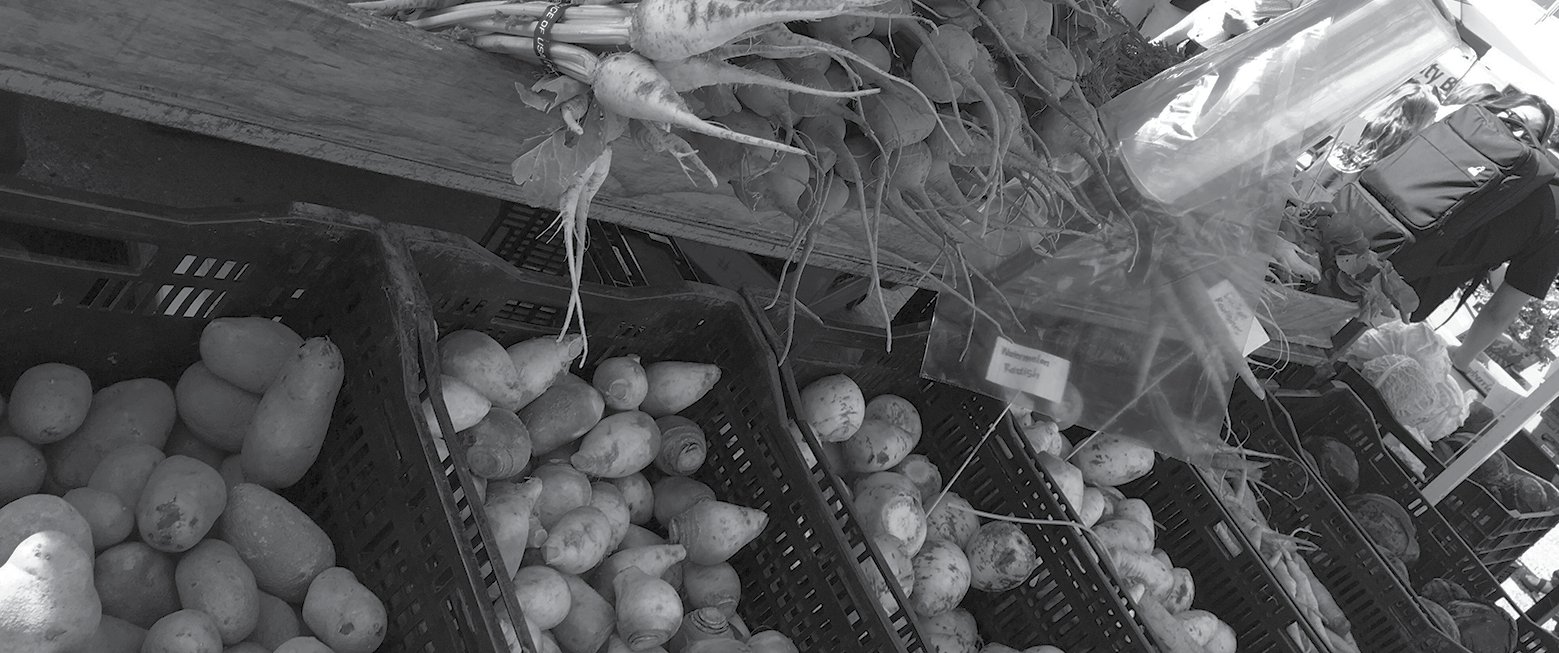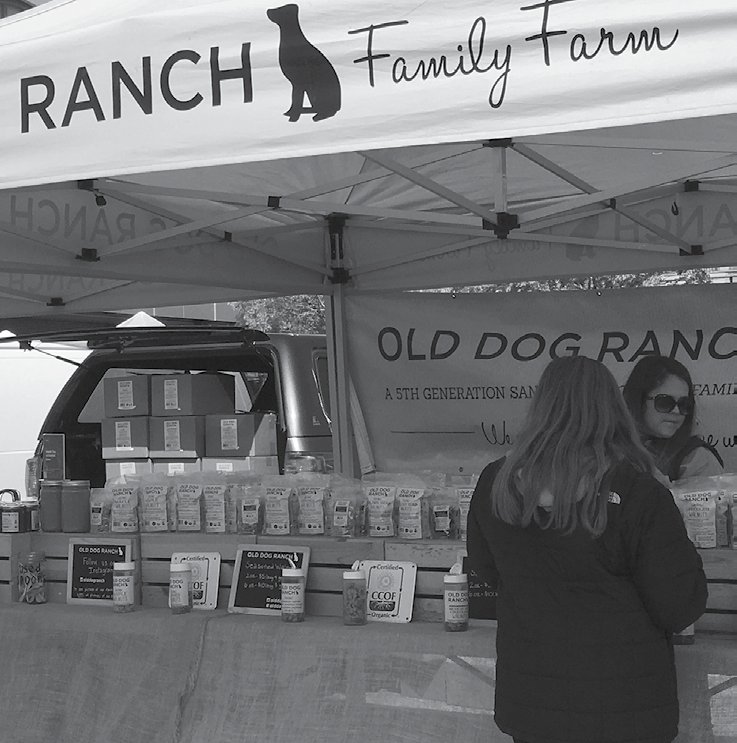By Geneviève Gazaille

Produce abounds at the bustling Ferry Plaza Farmers Market in San Francisco, as our reporter Geneviève Gazaille recently discovered on her tour of local markets. Photo by Geneviève Gazaille
As consumers, we don’t give much thought to where our food comes from when we place an item in our basket at the grocery store, except perhaps at the peak of the local strawberry season when we notice the package of California strawberries on display. Thanks to our harsh weather, we are used to buying foreign, industrially-produced foods, especially in the winter. Although Canadian farmers are resourceful and are constantly investigating new methods to extend the growing season, the reality is that their capacity remains very limited by the elements.
According to Export.gov, more than 80 percent of fresh fruits and close to 30 percent of fresh vegetables consumed in Canada are imported, mainly from the United States.
These imports often come at a cost: greenhouse gases from transportation; consumption of growth hormones and chemicals; unripened products; lack of freshness; lack of taste; and the list goes on.
Not to say that our own agricultural landscape is perfect. Our trade system is such that often, food produced right here is shipped across the world, sometimes only to make its way back to us. This is nonsense that leaves us vulnerable to world crisis and opens the door to more food insecurity.
Buying locally has many overriding benefits, including an understanding of how and where our food was produced and cutting our environmental footprint.
Over the past few years, I’ve grown increasingly fond of our local food economy and its benefits for our Ottawa communities. As a result, it’s now become a habit of mine to visit farmers’ markets and nearby farm gates whenever I travel locally or internationally.

The Old Dog Ranch booth at the Ferry Plaza Farmers Market in San Francisco, which Genevieve Gazaille of The Mainstreeter recently toured. She found the market to be the best one she has seen yet in North America.
Photo by Geneviève Gazaille
That’s exactly what I did when I recently visited San Francisco. As someone who is weary of industrial agriculture, I was skeptical. San Francisco is often portrayed as a foodie mecca, the land of celebrity chef and farm-to-table advocate Alice Waters and of famous Berkeley professor and author Michael Pollan. But it’s also part of California, one of America’s industrial farming hubs. California grows more than one-third of the United States’ vegetables and two-thirds of its fruits and nuts.
I was smitten. The market was bustling and alive. Ferry Plaza Farmers Market was nothing less than the best market I’ve been to in North America, boasting an array of local produce. Since 1993, the market has served as a link between urban San Franciscans and local farmers and is renowned for its diverse offering of products from California’s cutting-edge sustainable growers, producers, and chefs, as well as education programs to connect urban eaters with the local foodshed.
Nothing is black or white
Perhaps I was impressed by the amazing prepared foods made of organic products. Perhaps it was the weather. Or maybe it was because Ferry Plaza Farmers Market had foods we just can’t find here, like walnuts and oysters.
I realized that nothing is black or white. Just like in Canada, there are two sides to the California food story. These vendors, like our own local farmers, put a lot of love in the tasty food they produce and are always keen to explain their journey. Importantly, they contribute to making our local communities self-reliant. So it’s important to continue visiting our local farmers’ markets, whether in Ottawa, San Francisco or elsewhere around the globe.







